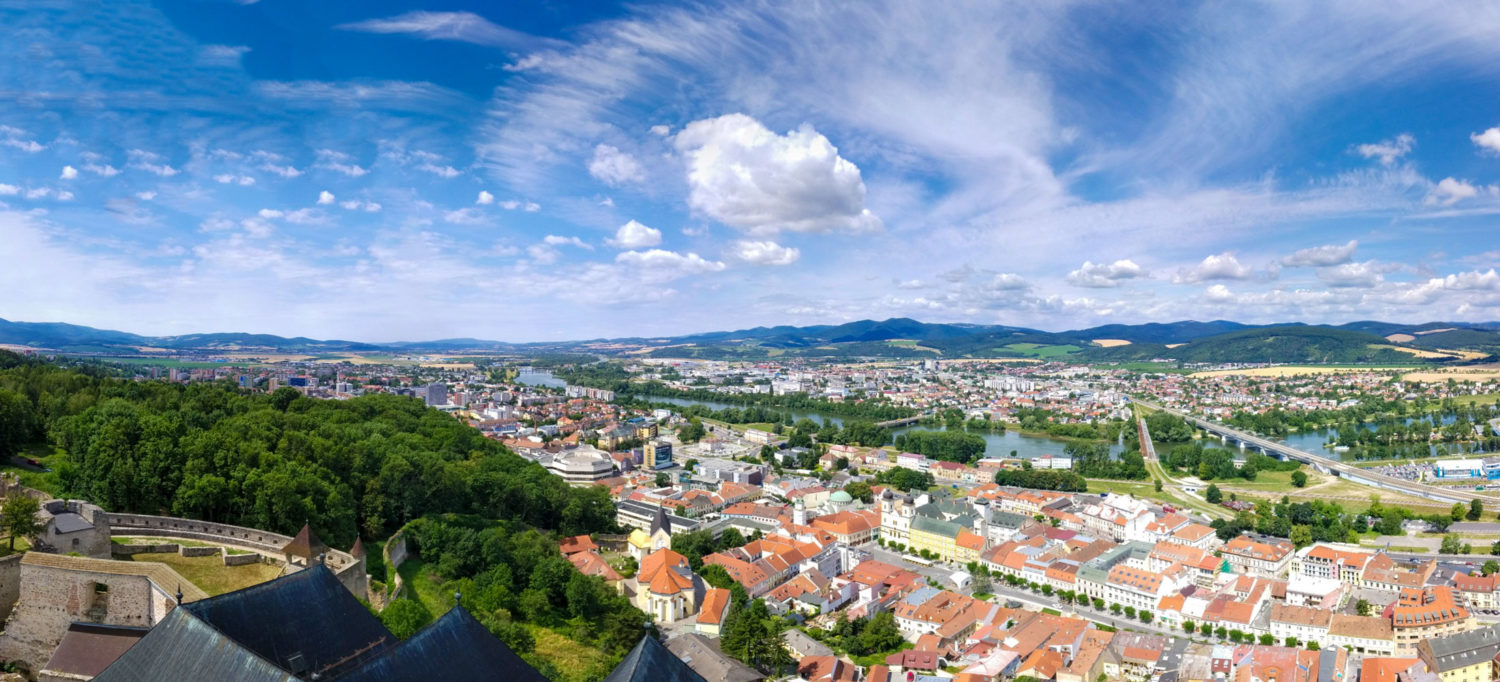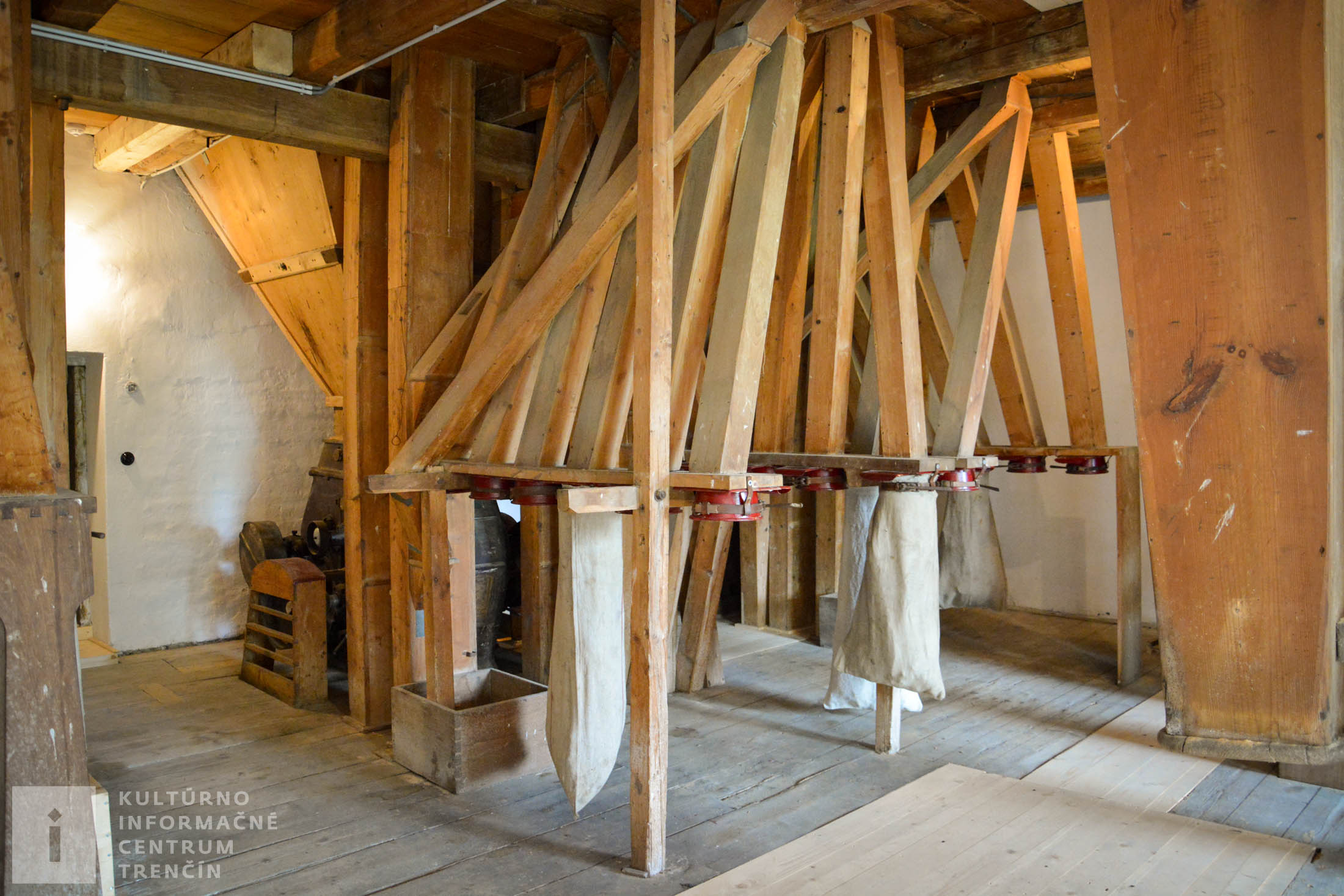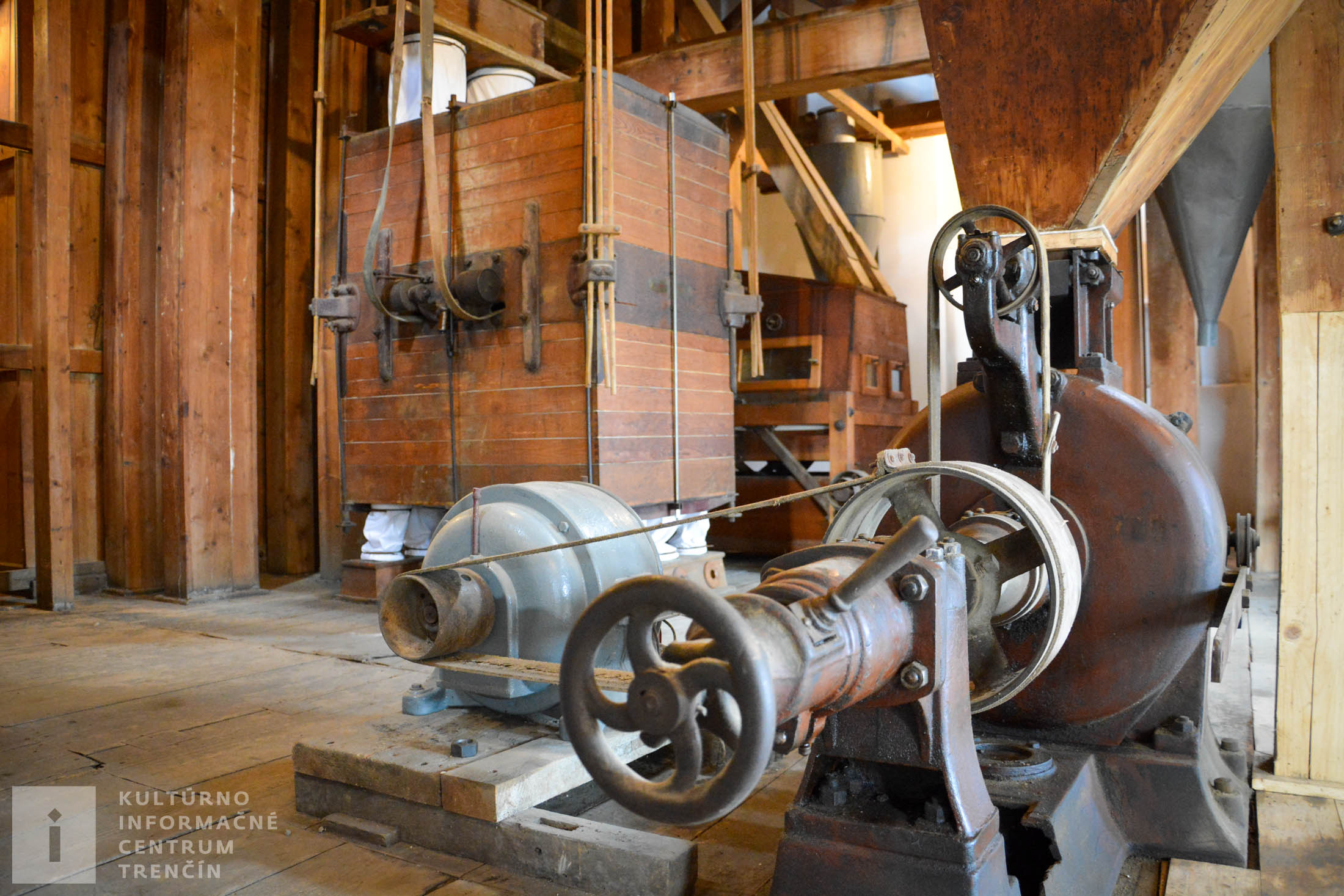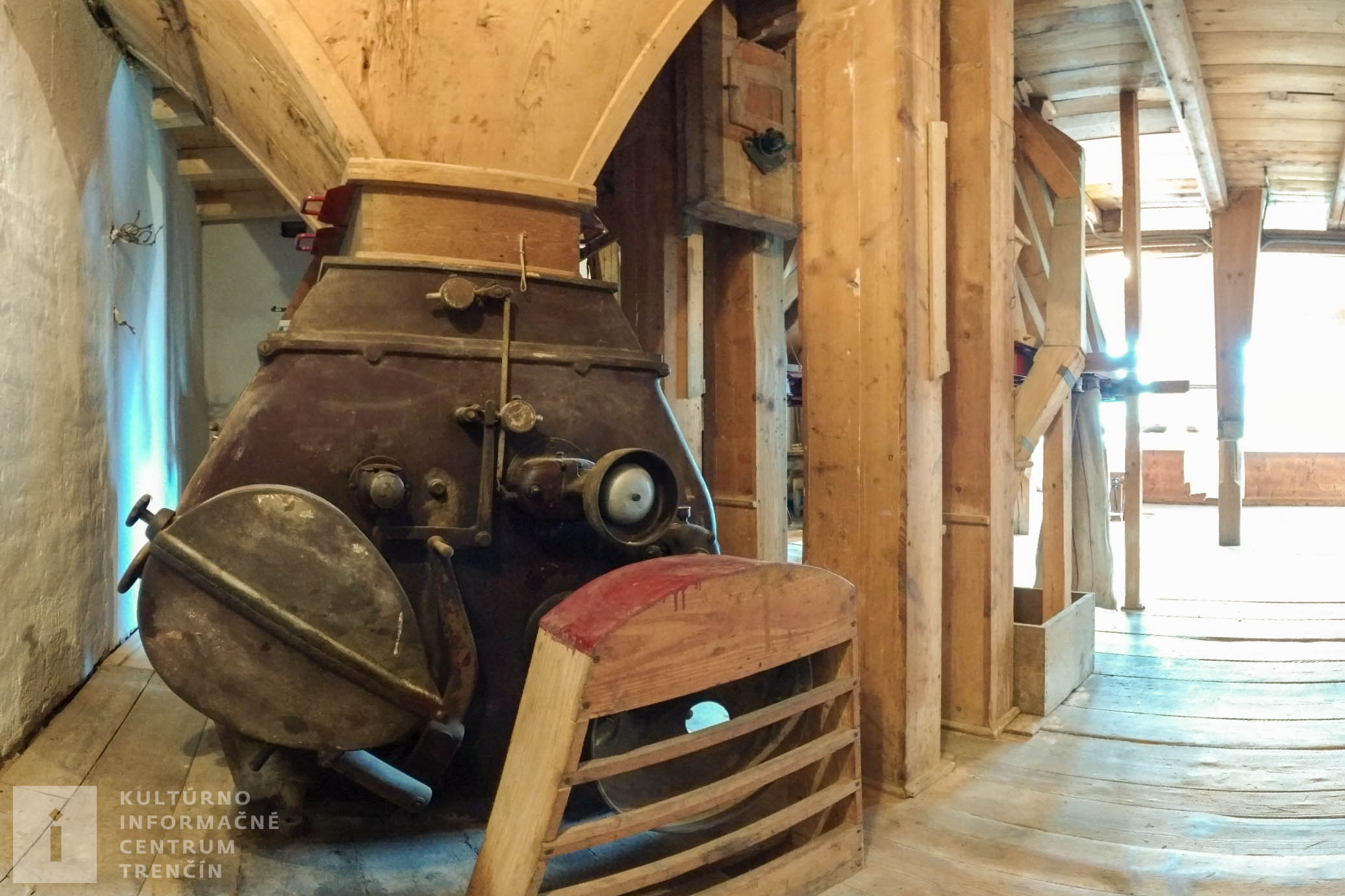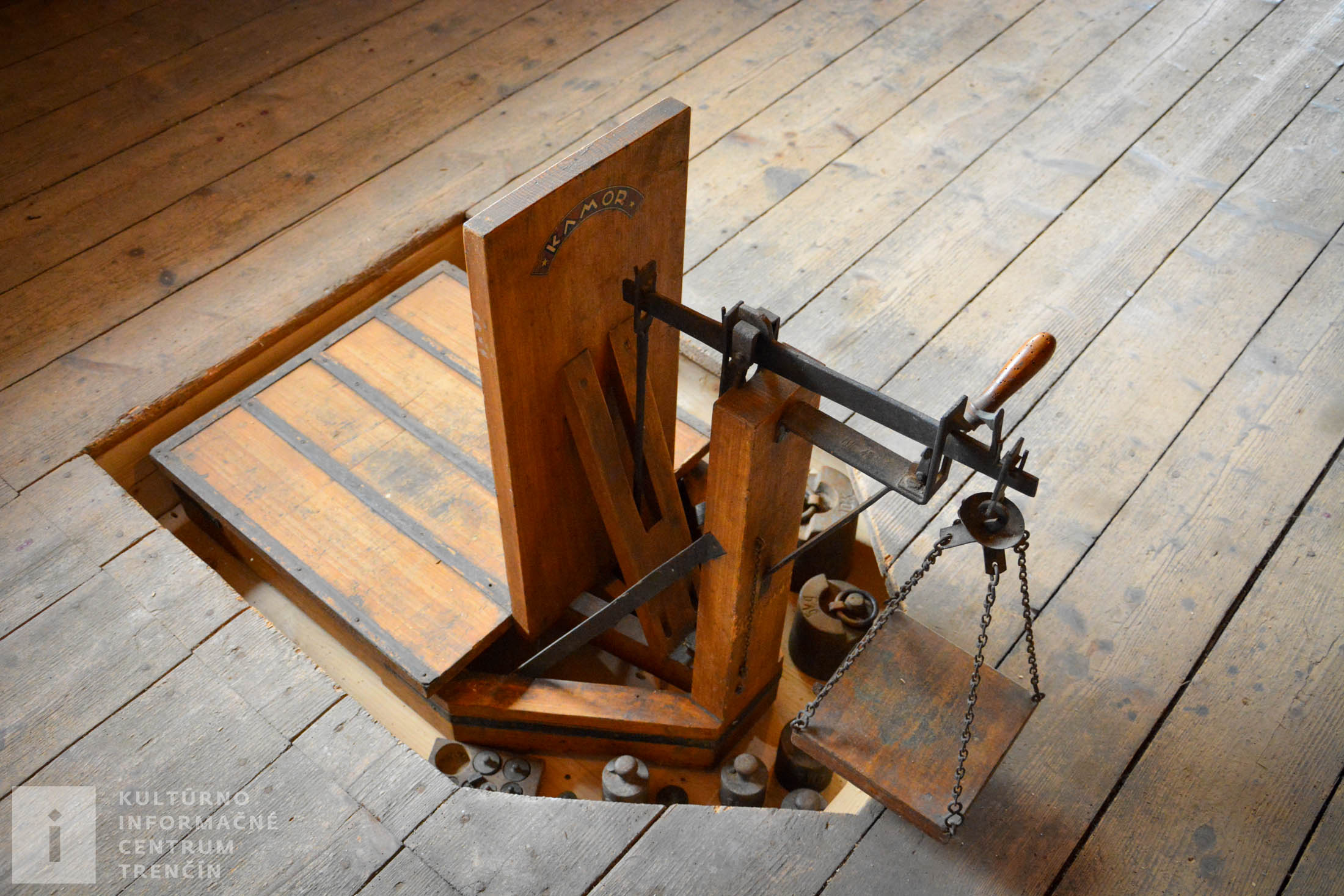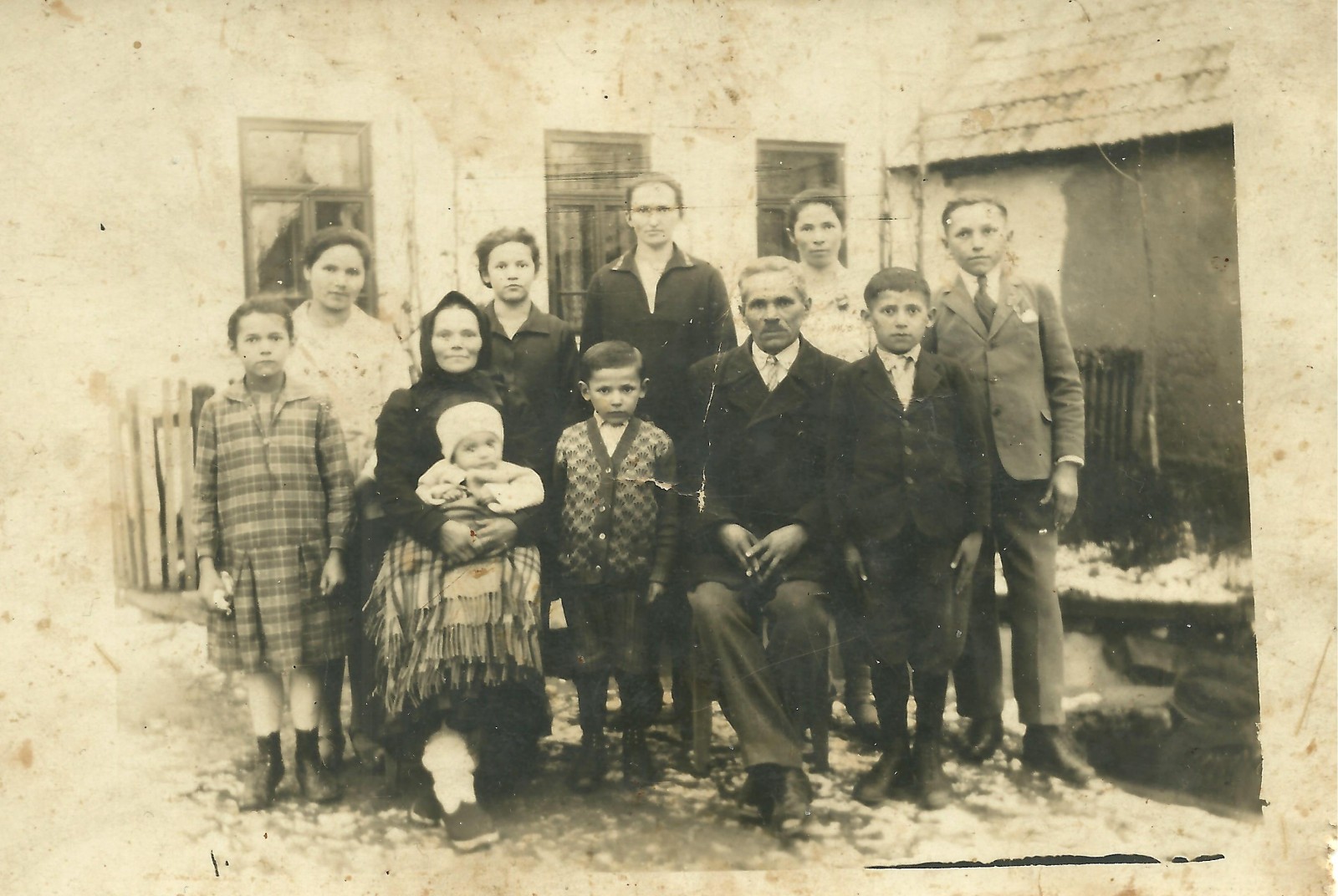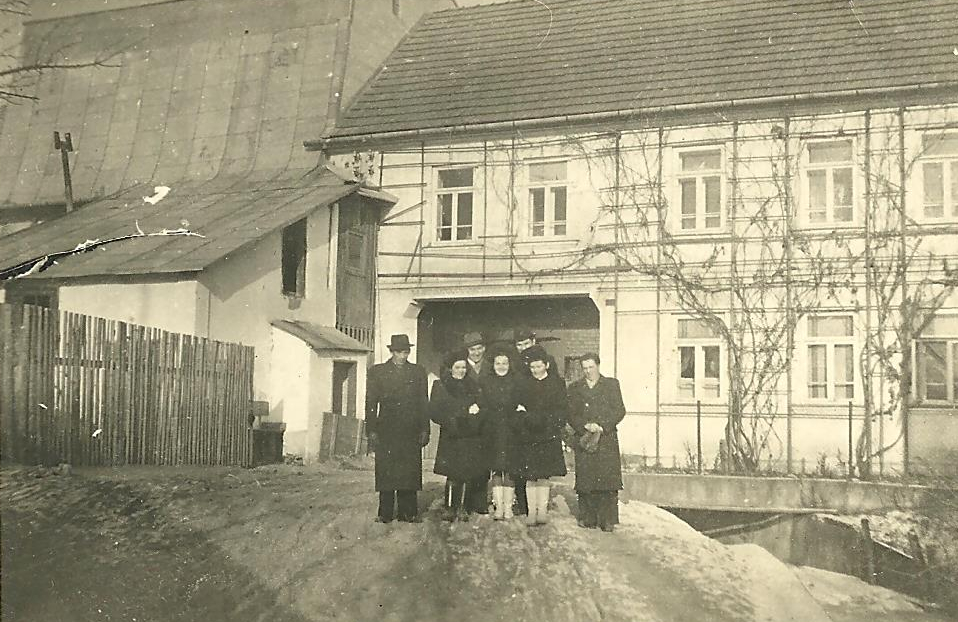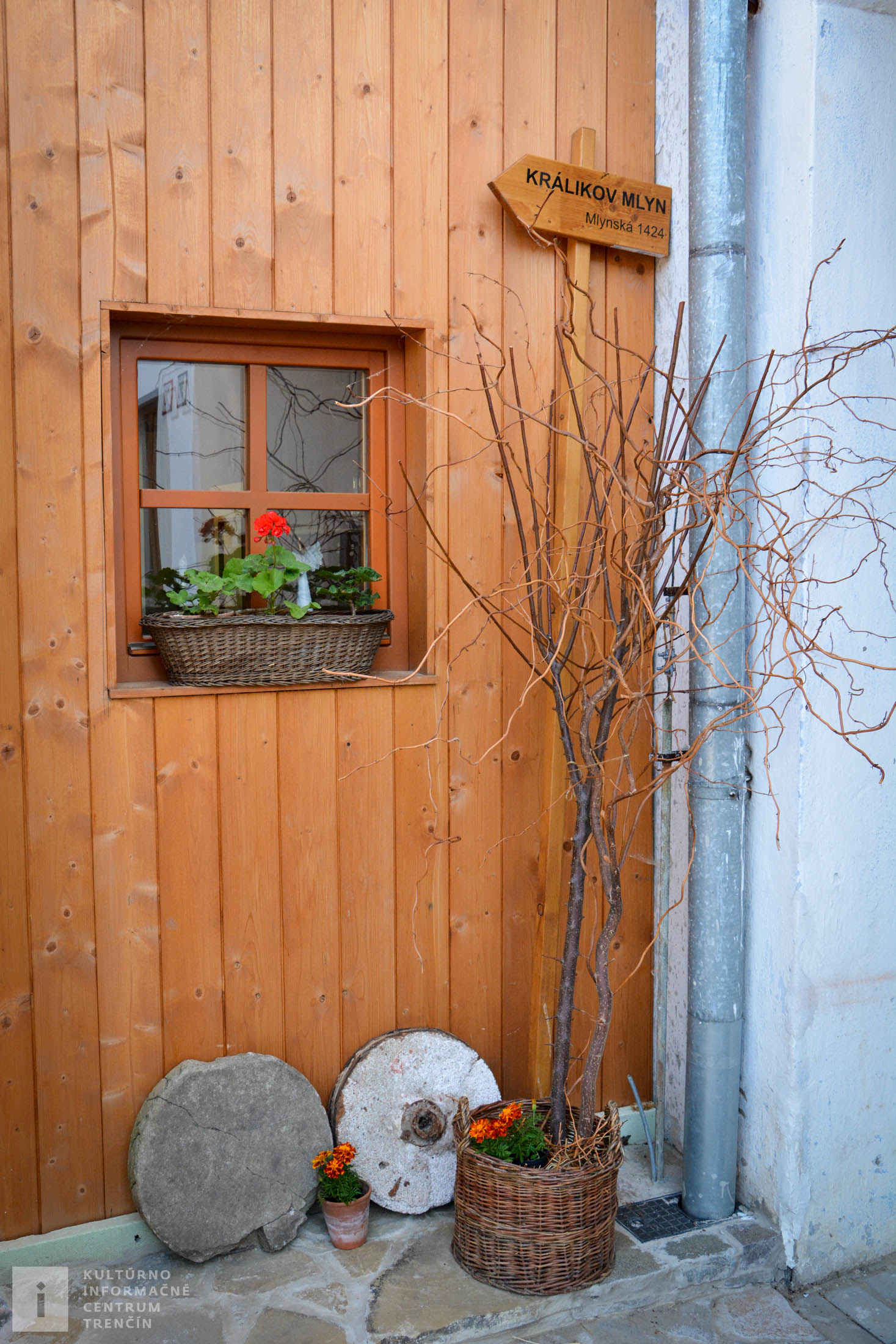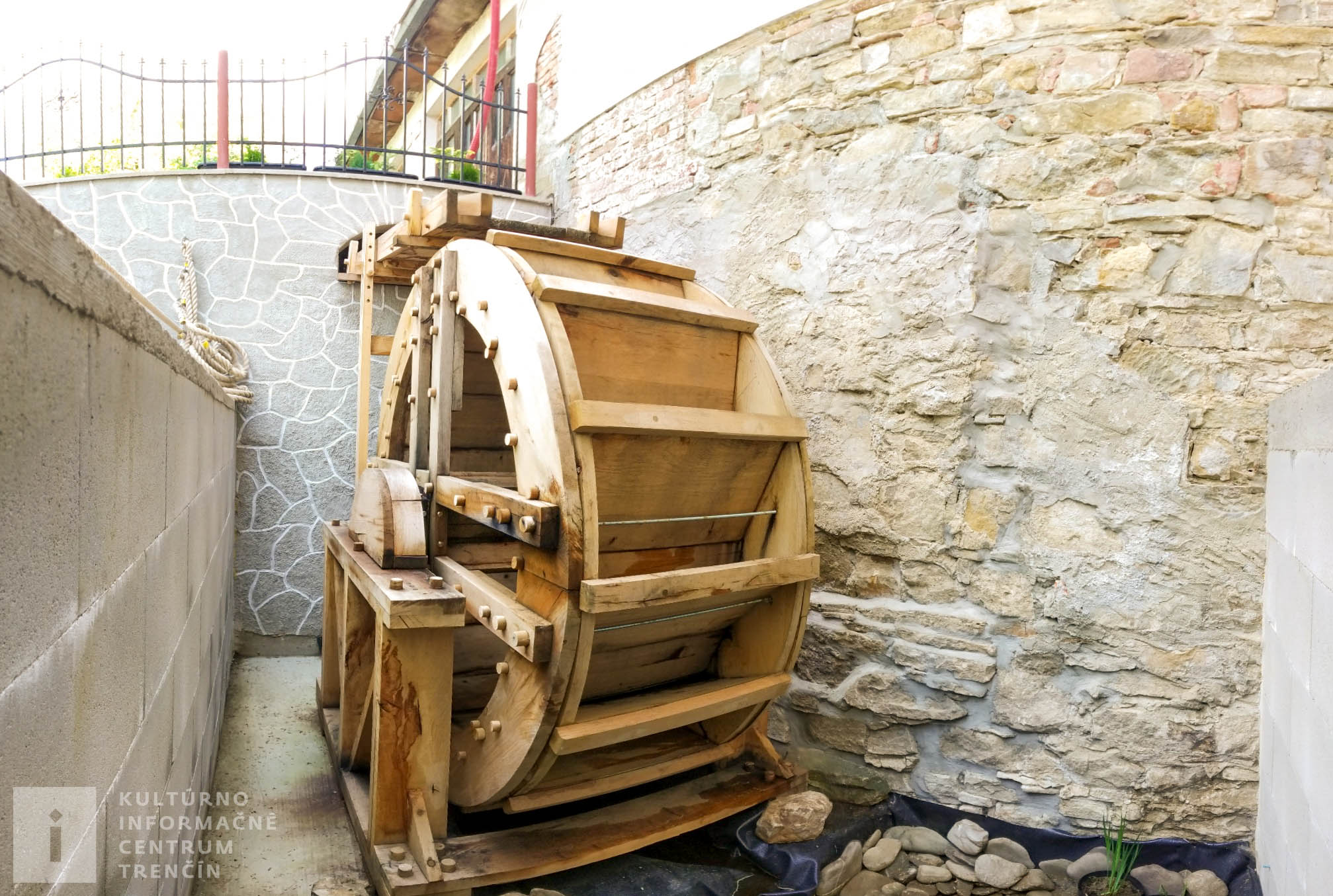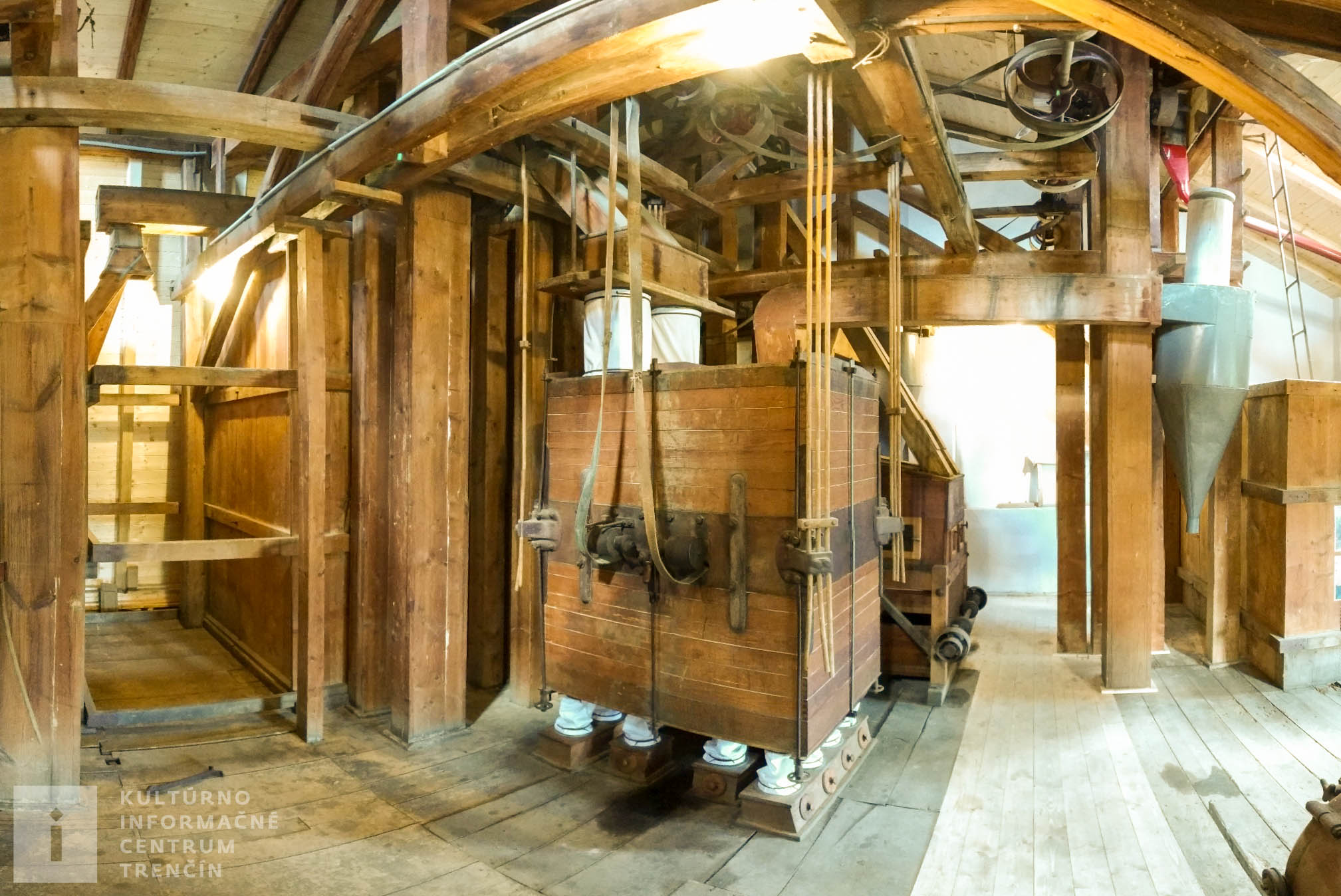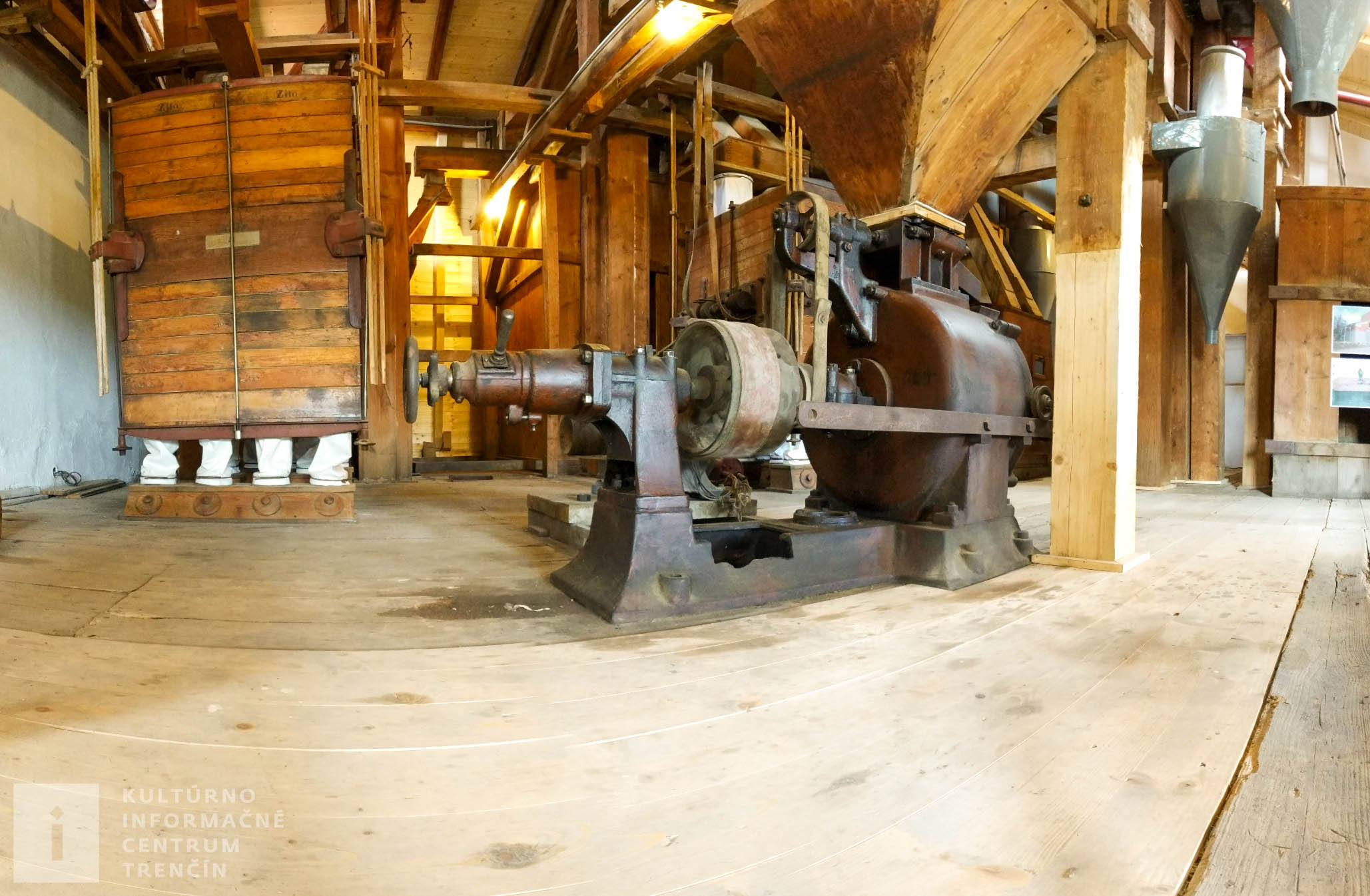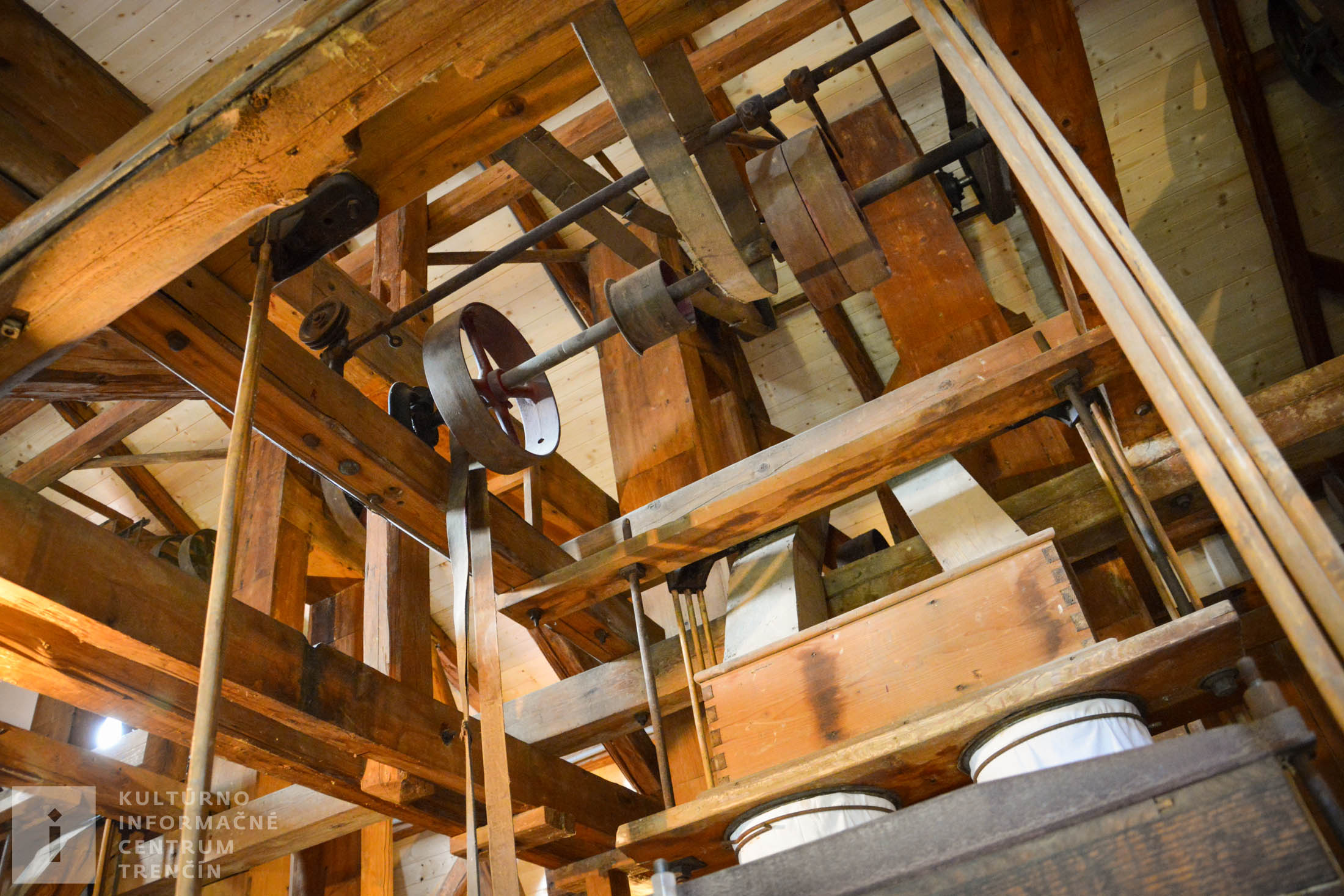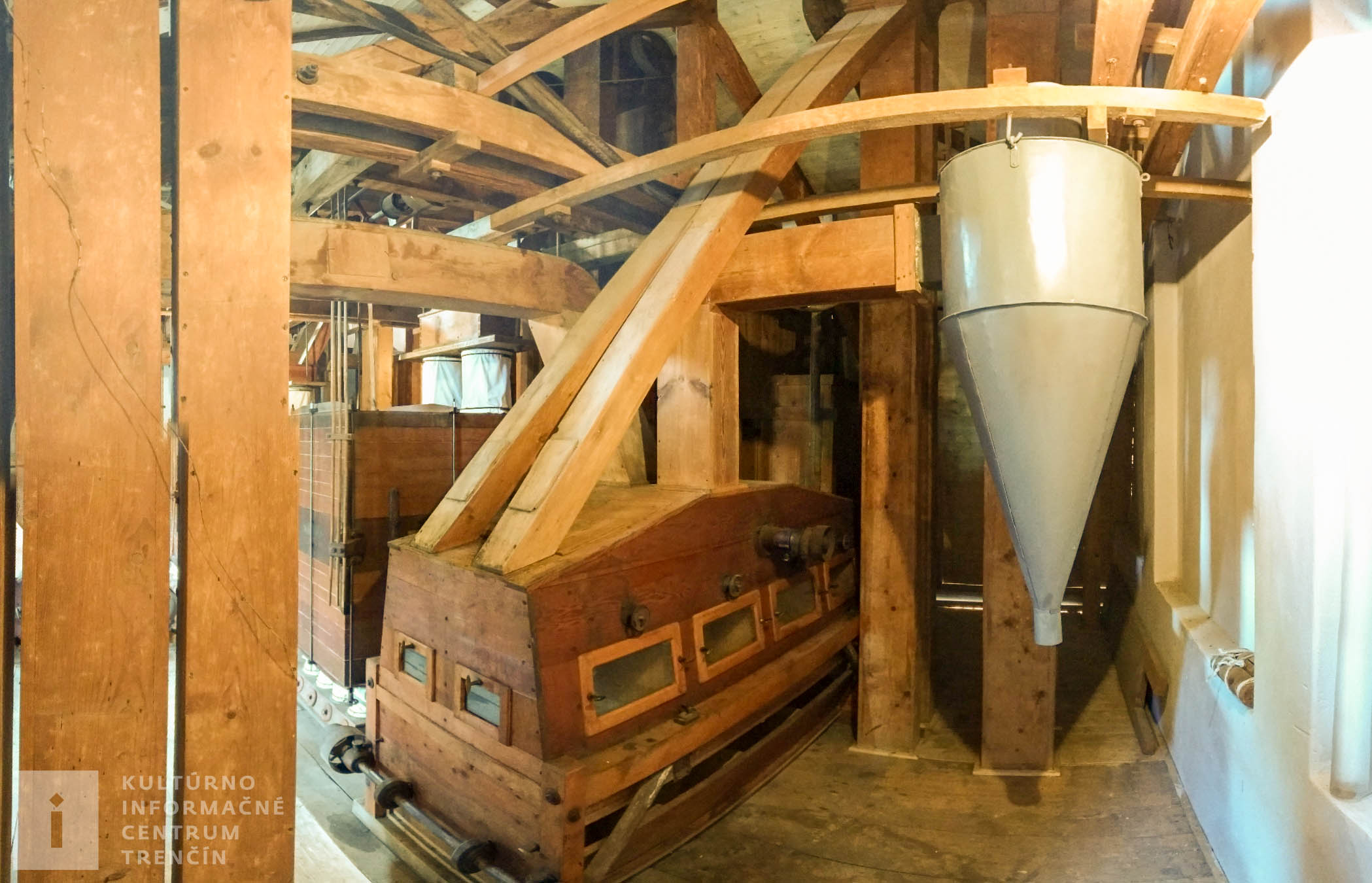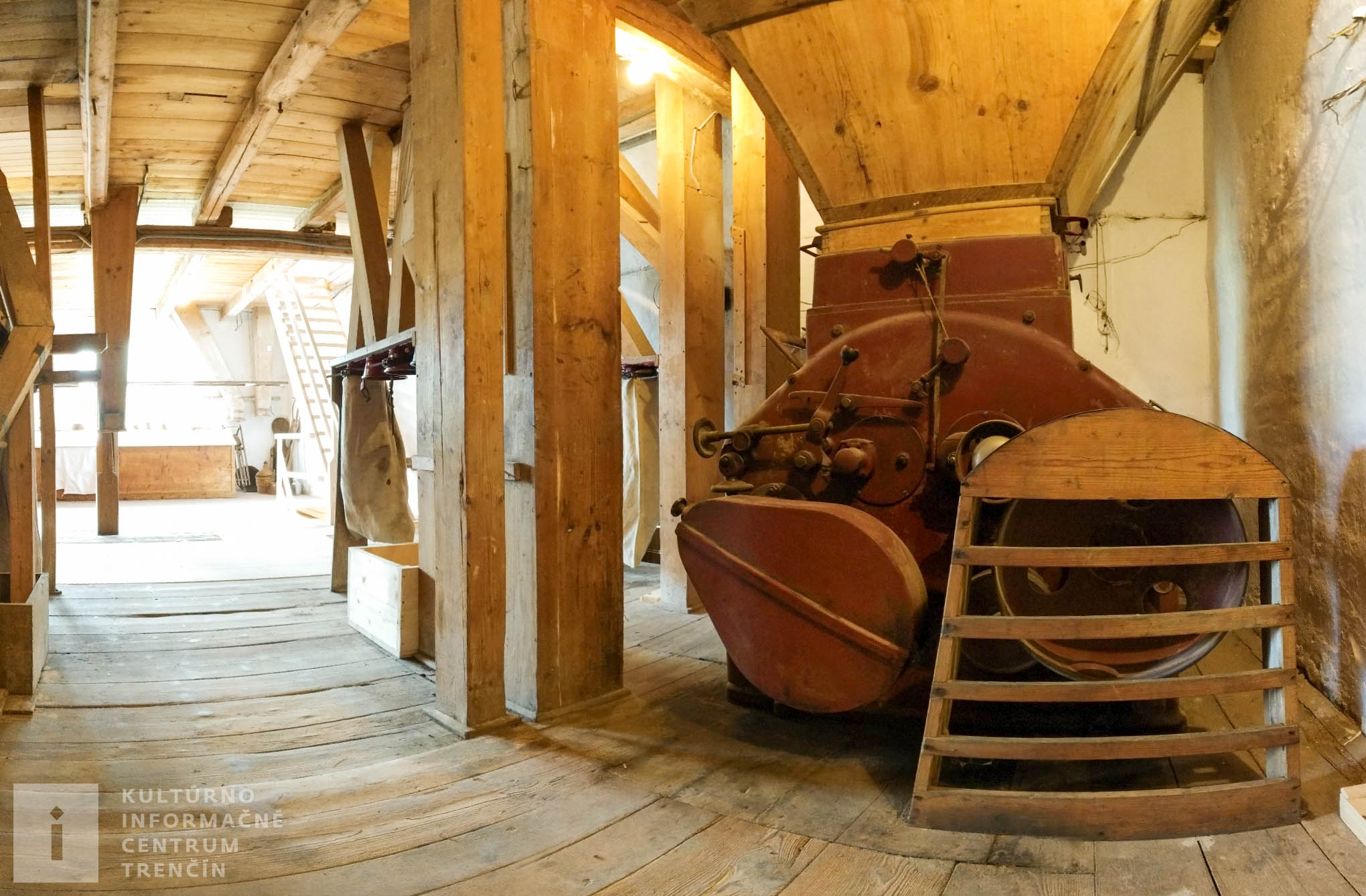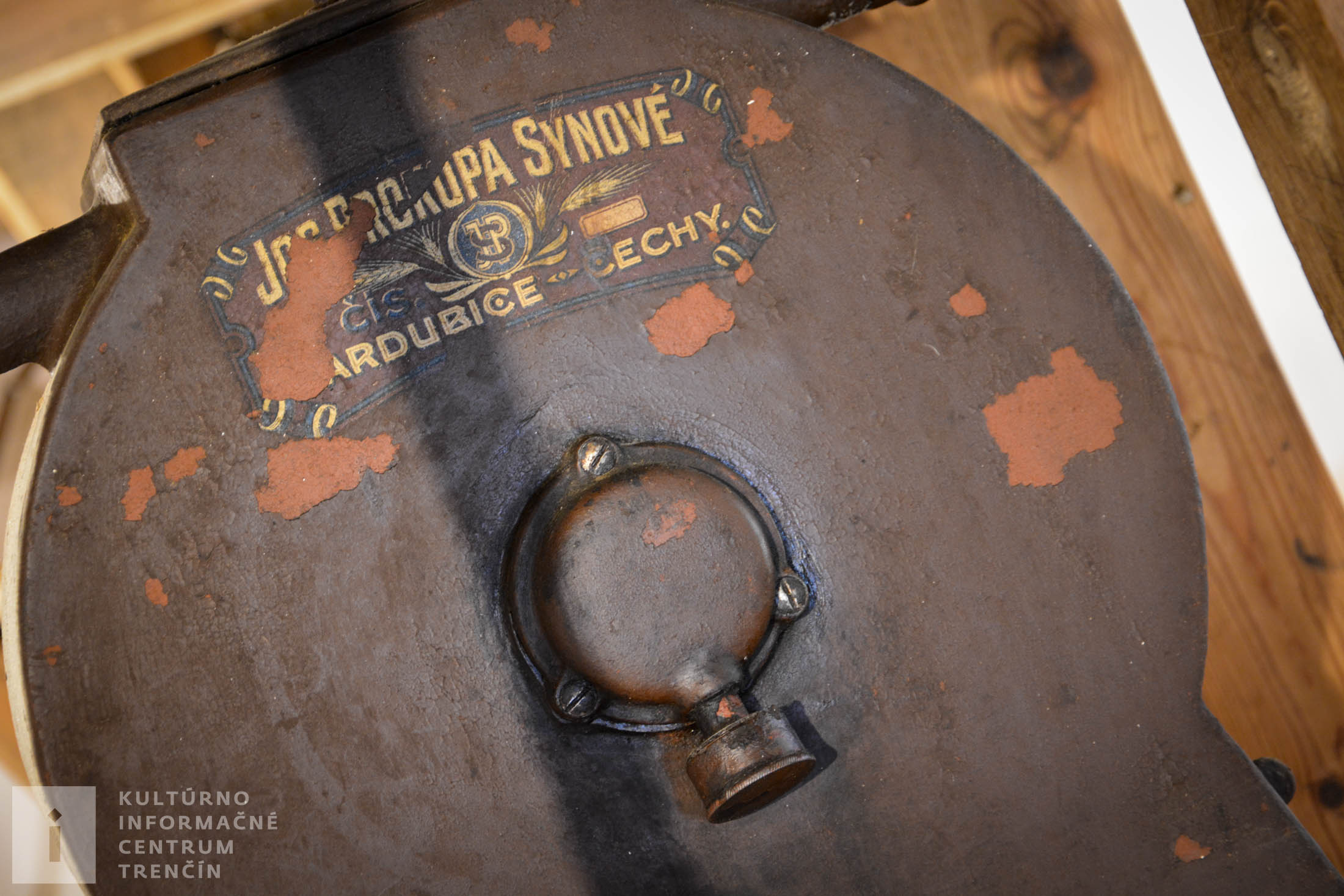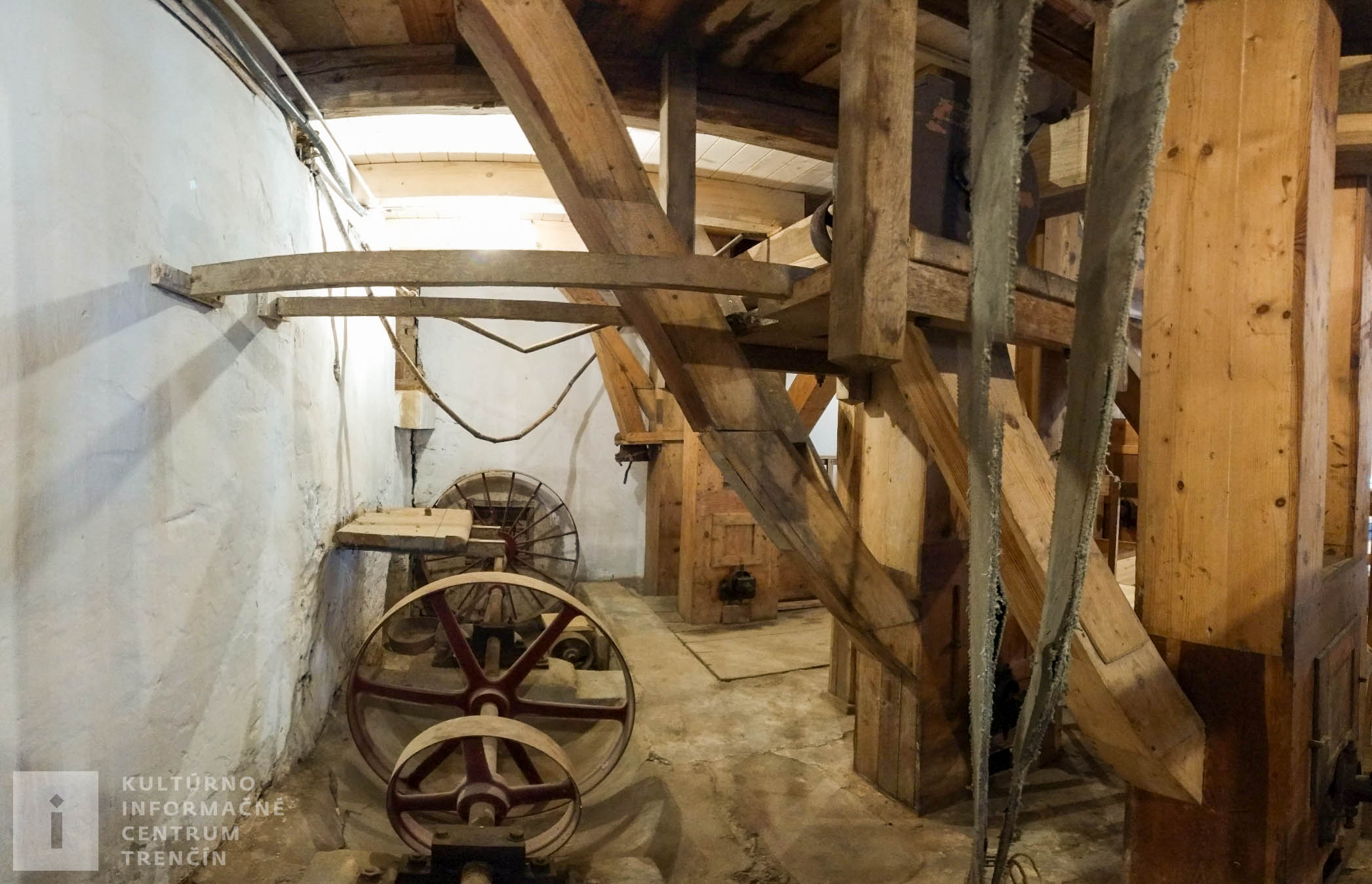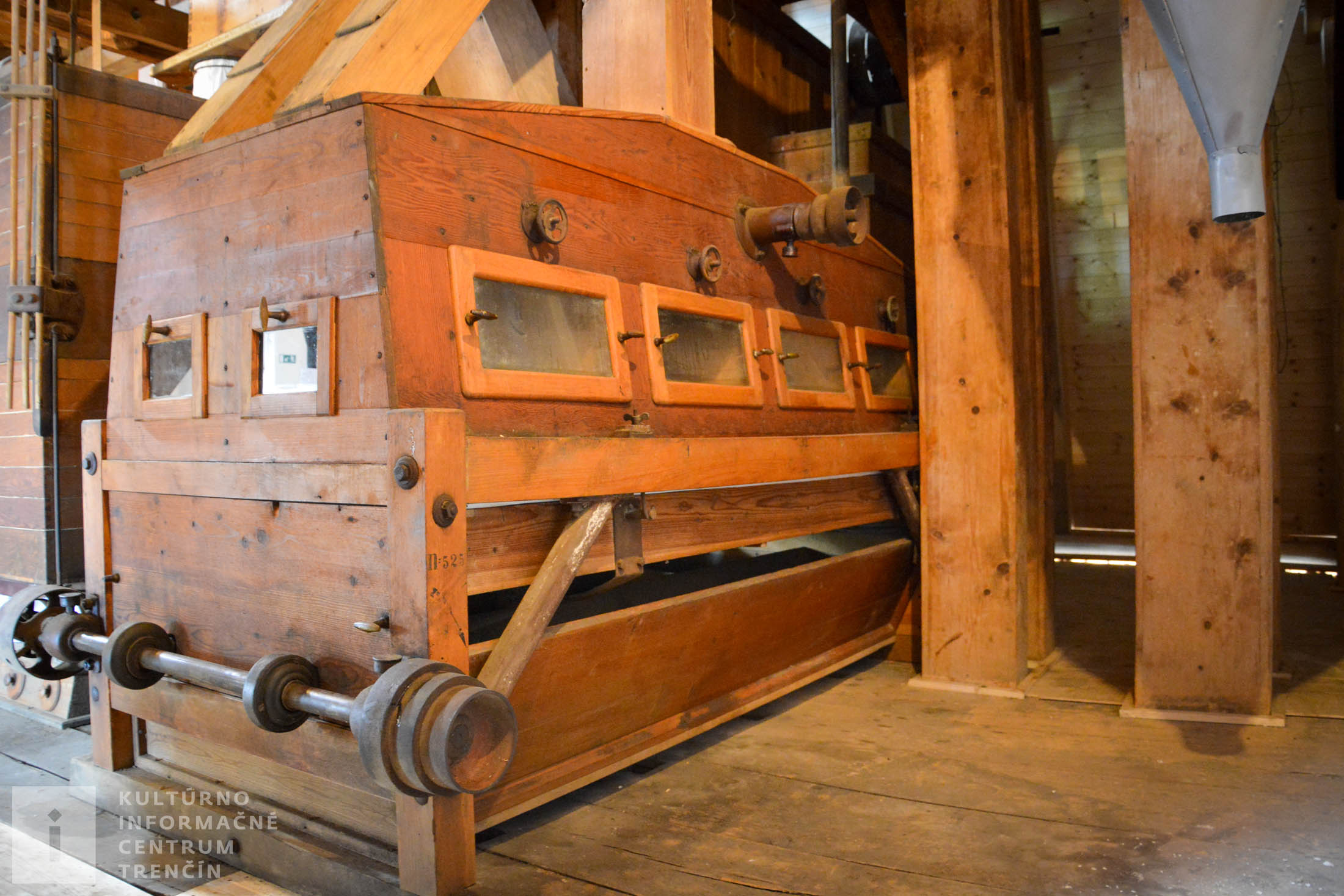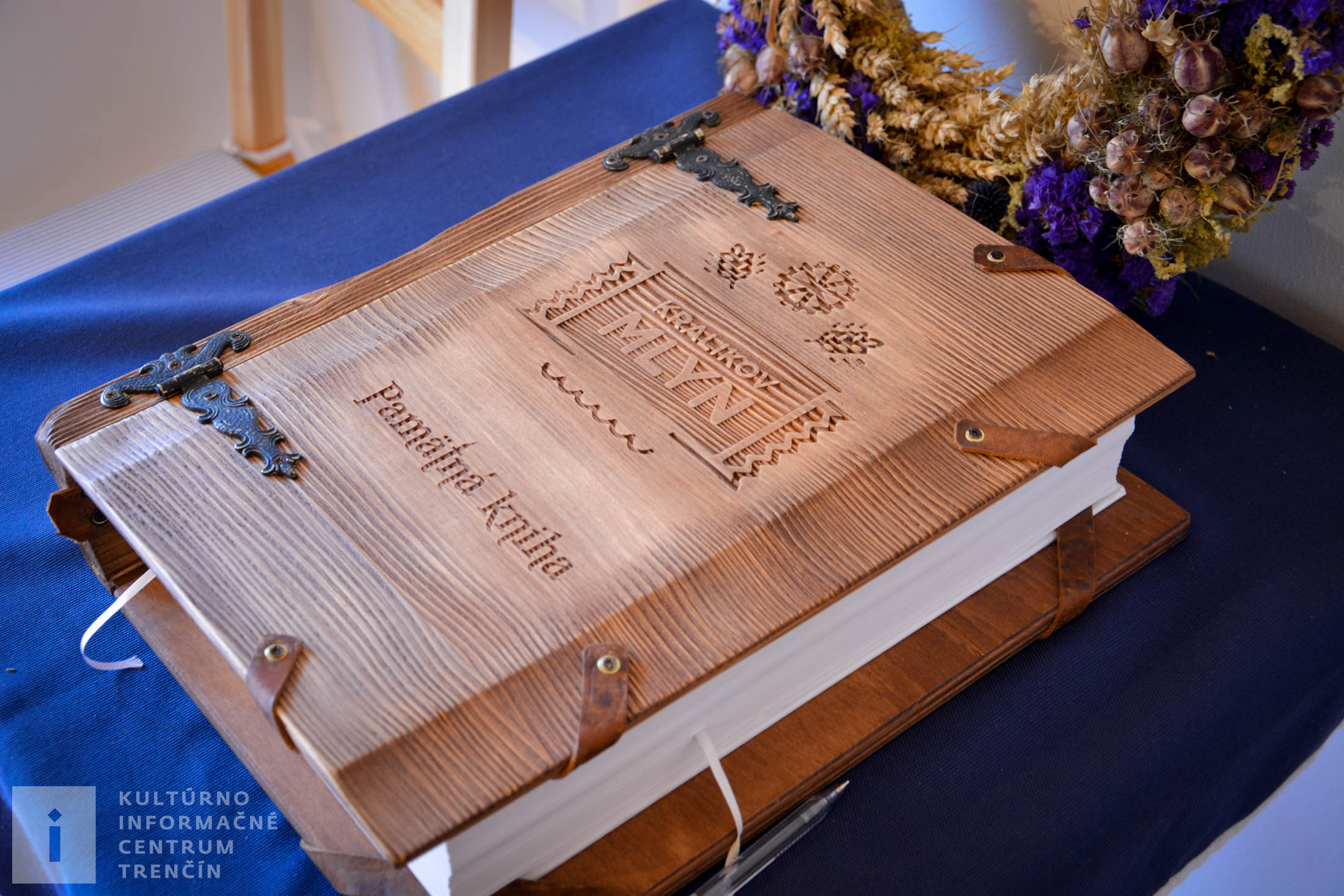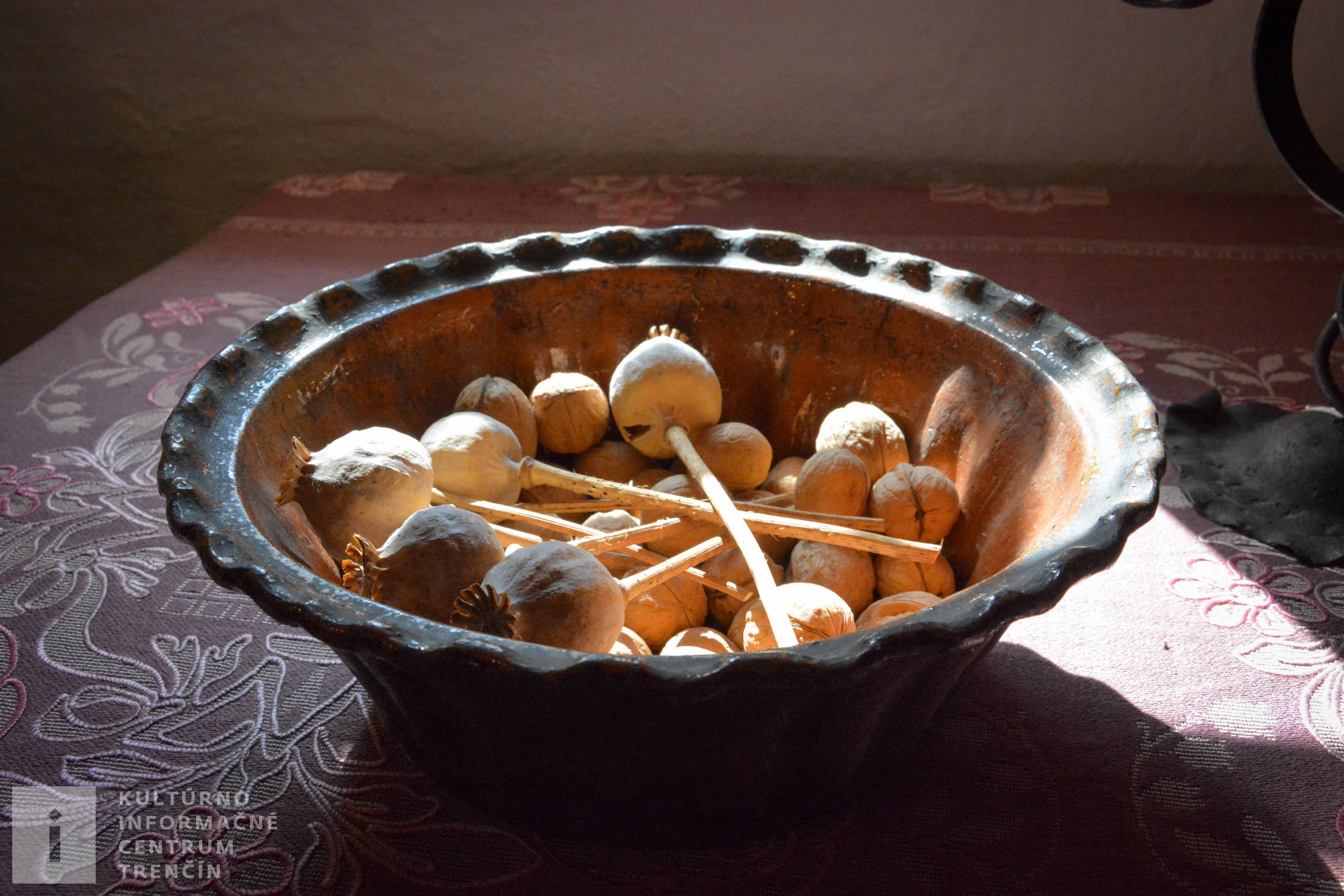Do you know how flour used to be milled in the past? Step into Králik’s Mill in Nemšová, one of the few preserved mills in the Trenčín Region. Although the mill is over 200 years old, it still retains its original milling machines and equipment.
Five generations of the Králik family worked in the mill, grinding flour for the nobility, the church, and everyday people alike.
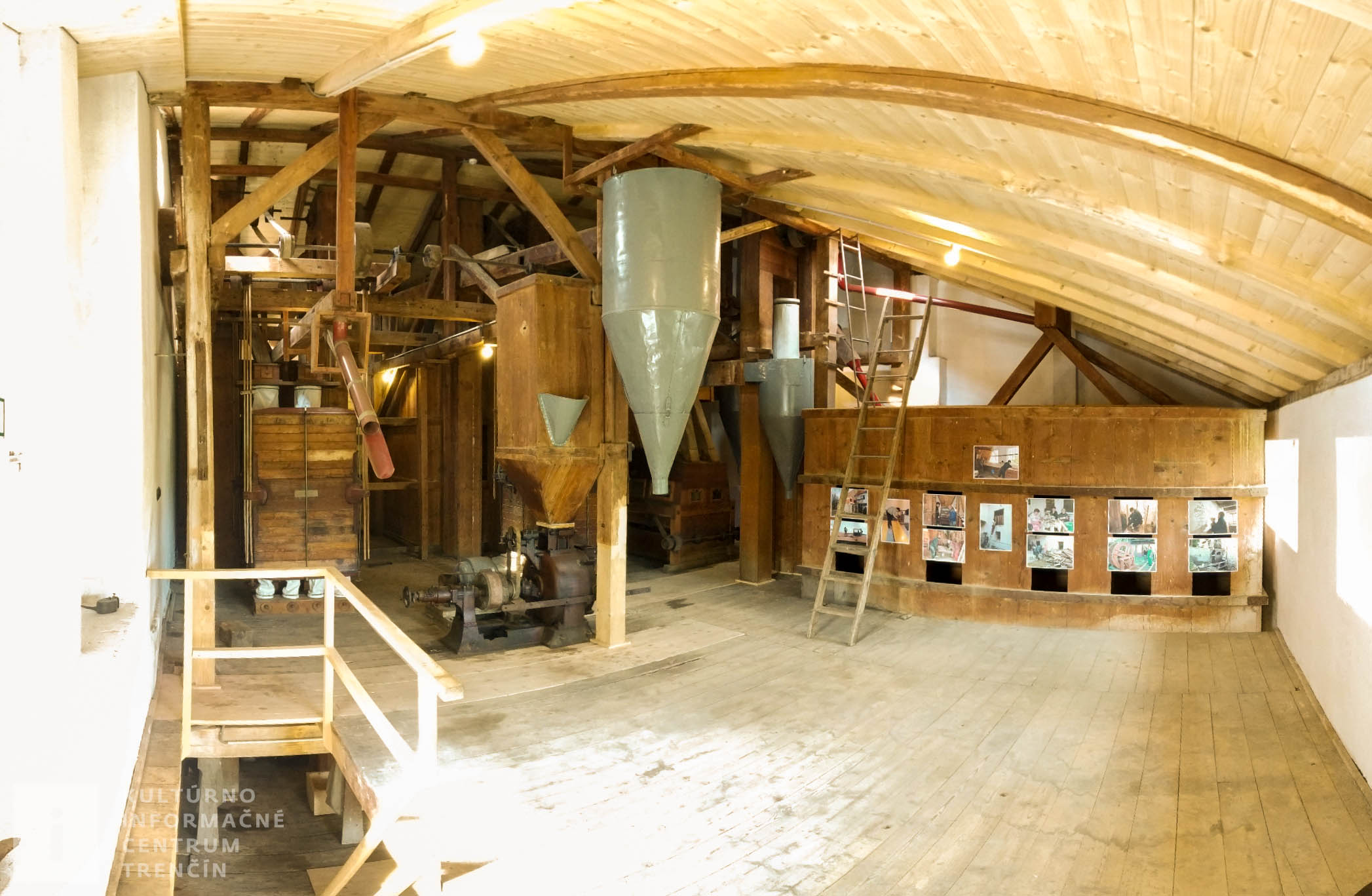
History of Králik’s mill
The first written mention of Králik’s mill dates back to 1822. The second-to-last owner was Ondrej Králik, who died in 1942. At the time, his son Jozef Králik was serving in the army, but due to the need to keep the mill running during the war (to ensure food for the population), he was released from military service. Jozef took care of the mill until it was nationalized in 1950. In the decades that followed, the mill gradually fell into disrepair — until it was brought back to life by a major renovation in 2018–2019.
Králik’s mill today
Today, Králik’s Mill stands as a beautiful reminder of the milling craft. When you see the preserved conveyors, lifts, dust separators, and wooden “pipes” through which ground flour used to fall into waiting sacks, you can’t help but admire how sophisticated the entire system was — from bringing in the grain, through processing it, to handing over the flour to the people.
On the ground floor, you’ll find more information about each generation of the Králik family. Children will especially enjoy the illustrated journey of a wheat grain, which shows all the steps from growing the crop to baking a warm, fragrant loaf of bread.
Thanks to nearby rivers Vlára and Váh, and many local streams, Nemšová offered excellent conditions for millers. As early as the mid-16th century, there were five water mills operating in the area. These mills were usually built on the outskirts of villages or outside them altogether — always in peaceful, romantic spots where the only sound breaking the silence was the steady clatter of the mill wheel.
Millers were highly respected in their communities because they helped people survive — by grinding grain into flour, they ensured the daily bread. They were special servants of the noble landlords and often had contact with the upper class. Millers had to know social etiquette, and thanks to their apprenticeships and travels, they were worldly and experienced individuals. Their homes stood out among other craftsmen’s dwellings — they were often two stories tall, with large courtyards and bigger footprints, because the mill and living quarters were usually housed under one roof.
Distance from Trenčín: 17 km
Access: The easiest way by car from Trenčín is via the highway, exiting at Dubnica nad Váhom. Continue to Nemšová, where after the railway crossing take the second right turn. By bus, you can go directly from Trenčín to Nemšová and get off at the Nivy stop. From there, it’s about a 7-minute walk to Králik’s Mill.
GPS: 48°58’13.2″N, 18°06’49.4″E
Opening hours: ? Thursday and Saturday from 2:00 PM to 5:00 PM
Admission: free entry
Contact:
Králikov mlyn
Mlynská 14, Nemšová
Tel.: +421 (0)905 596 949
E-mail: info@kralikovmlyn.sk
Web: www.kralikovmlyn.sk

; ?>)

